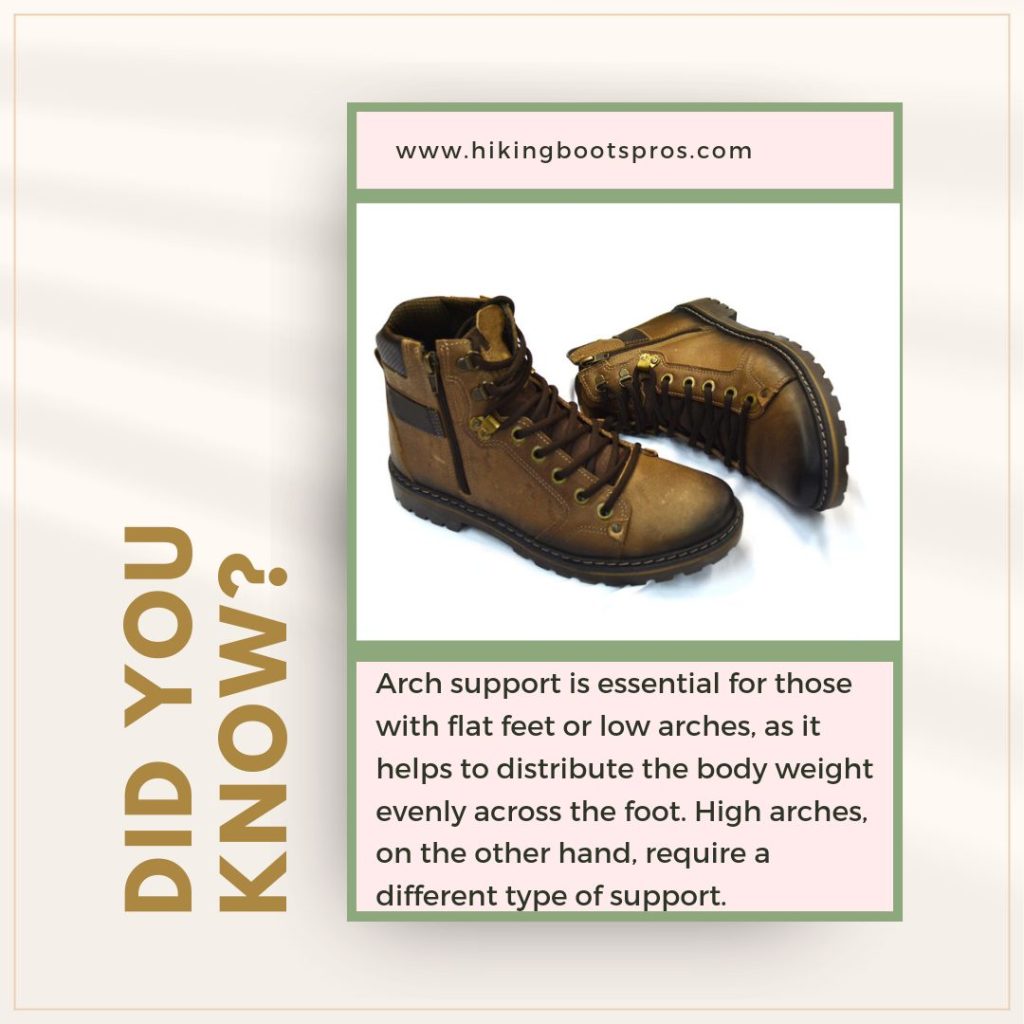When it comes to hiking boots, one of the most noticeable features is the thick sole. Have you ever wondered why hiking boots have thick soles?
In this blog post, we will explore the various reasons why thick soles are essential in hiking boots. We’ll discuss how they provide support and stability, protection, cushioning, and comfort to make your hiking experience more enjoyable.
Why Do Hiking Boots Have Thick Soles?
Thick soles are a crucial element in hiking boots for several reasons. First, they provide support and stability on uneven terrain, which is essential for preventing ankle sprains and other injuries. Second, they provide protection against sharp objects like rocks, roots, and thorns. Third, they offer cushioning and comfort, reducing the impact on your feet and joints.
How Thick Soles Provide Support and Stability?
Thick soles provide varying levels of support depending on the activity and the terrain. For example, if you are hiking on rocky terrain, you will need a stiffer sole to provide more support and stability. Thick soles also help with proper foot and ankle alignment, which is crucial for avoiding injuries.
Varying levels of support
Different boots offer varying levels of support, and it is important to choose the right level of support based on your foot type and the activities you’ll be engaging in. There are three main types of support that boots can offer: arch support, heel support, and ankle support.

Arch support is essential for those with flat feet or low arches, as it helps to distribute the body weight evenly across the foot. High arches, on the other hand, require a different type of support. Boots with built-in arch support can help prevent plantar fasciitis, a painful condition that affects the bottom of the foot.
Proper foot and ankle alignment
Thick soles help to distribute the weight of your body evenly across your feet, reducing the pressure on any one particular area. This can help prevent foot and ankle pain and injuries.
Stability and support
Thick soles also provide stability by increasing the surface area of the sole that is in contact with the ground. This increased surface area creates more friction, which helps prevent slipping and sliding on uneven terrain.
How Thick Soles Provide Protection?
Hiking boots with thick soles provide an excellent layer of protection for your feet. When hiking, you can encounter all sorts of obstacles, including rocks, roots, and other rough terrain. The thicker soles provide a barrier between your feet and the ground, protecting you from any sharp or jagged edges that could cause injury.
Protection from Rocks, Roots, and Other Obstacles
Hiking trails can be fraught with hazards like sharp rocks, twisted roots, and jagged terrain, all of which can cause injury to your feet. Hiking boots with thick soles provide a barrier between your feet and the ground, reducing the risk of injury.
The thicker the sole, the less likely you are to feel sharp objects underfoot, and the less likely you are to injure your foot. Additionally, thick soles provide better traction on slippery surfaces, preventing slips and fall that can lead to injury.
Durable Materials for the Sole
Thick soles are typically made from durable materials such as rubber or polyurethane, which can withstand the rough terrain encountered during hikes.
These materials also offer excellent shock absorption, reducing the impact of each step on your feet and joints. The durability of the sole material ensures that your boots will last longer, protecting your feet on many hikes to come.
Choosing the Right Type of Sole
Not all thick soles are created equal, and different types of soles provide varying levels of protection and durability. For example, Vibram soles are a popular choice for hiking boots due to their excellent traction and durability.
Other types of soles, such as EVA (ethylene-vinyl acetate) foam, are lighter and more comfortable, but may not provide the same level of protection as Vibram soles. When choosing the right type of sole for your hiking boots, consider the type of terrain you will be traversing and the level of protection you need.
How Thick Soles Provide Cushioning and Comfort?
Thick soles not only protect your feet but also provide cushioning and comfort during long hikes. The thickness of the sole allows for more material to be used in the midsole, providing additional cushioning for your feet. The additional padding helps to reduce fatigue and soreness in your feet and joints, allowing you to hike longer and more comfortably.
Additionally, thick soles help to distribute the weight of your body evenly across your feet, reducing pressure points and hotspots that can cause blisters and discomfort. The cushioning provided by thick soles also helps to absorb the impact of each step, reducing the strain on your feet and joints.
Read about: Are hiking boots a must
Conclusion
In conclusion, hiking boots have thick soles for good reason. Thick soles provide support and stability, protection, cushioning and comfort, which are all essential for a comfortable and safe hiking experience. When choosing hiking boots, make sure to consider the terrain, your activity level, and your foot type to ensure that you get the right level of support and protection for your needs. Happy hiking!
FAQs
Hiking boot soles can be made of a variety of materials, including rubber, polyurethane, and Vibram, a specific type of rubber often used in hiking boots for its durability and traction.
While hiking boots typically have thicker soles than regular shoes, the exact thickness can vary depending on the brand, style, and intended use of the boot.

Tyler Looney is an avid hiking enthusiast and the author of HikingBootsPros.com, a website dedicated to providing helpful insights and advice on choosing the best hiking boots. His expertise and passion for hiking have made him a valuable resource for both beginner and experienced hikers alike.

